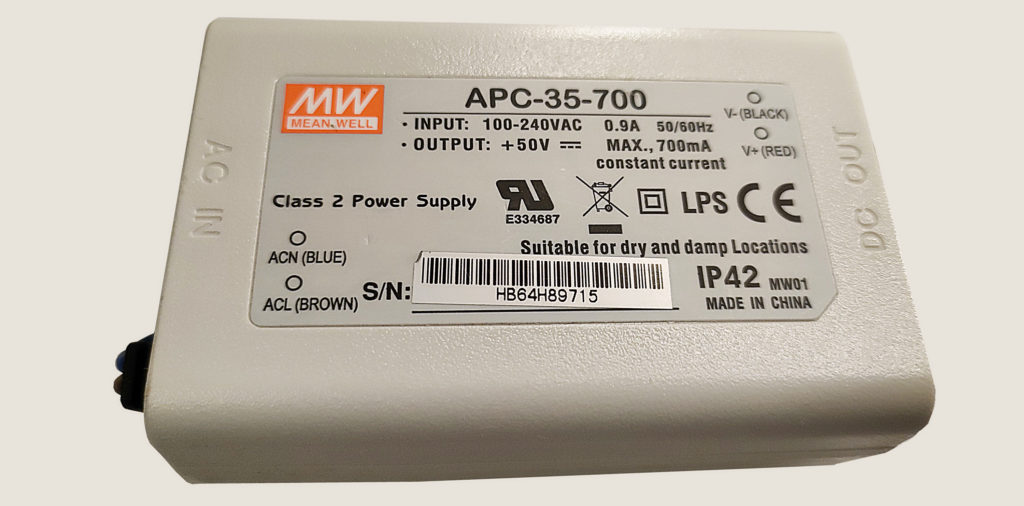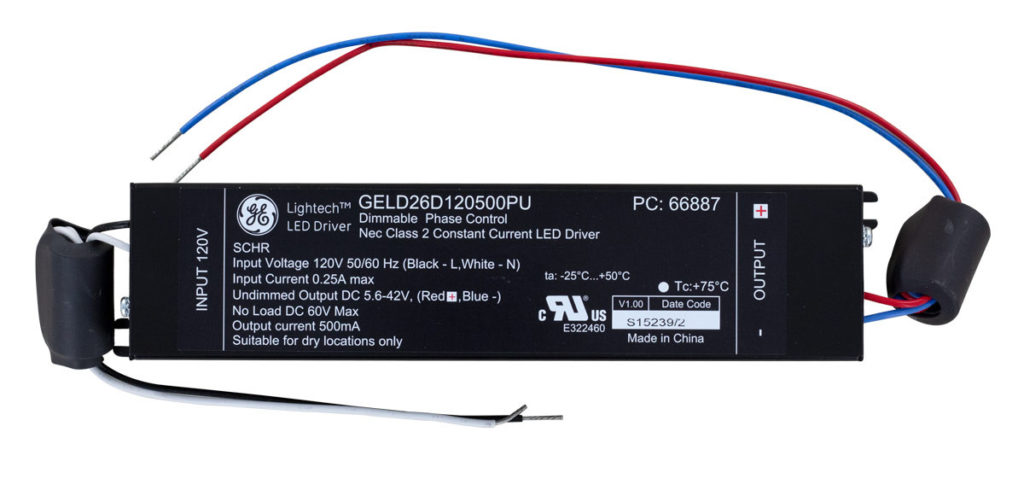Exploring the Basics: What Is An LED Driver March 14, 2023 – Posted in: General Info, Lighting Information

Table of Contents
If you’re looking into setting up or upgrading your LED lighting system, you may find yourself wondering just what is an LED driver?
LED drivers, also known as LED transformers, are a key component in all LED lighting systems. However, just because they’re found in all LED lights, doesn’t mean that they’re all the same or that it’s not worth understanding how they work and what the differences between them are. The driver you use can make a huge difference to your LED lighting experience.
What Is An LED Driver

LED drivers are specialized power supplies that ensure that LEDs receive the power they need at the correct voltage and in the correct form, without any potentially damaging fluctuations. The energy efficiency and long lifespans of LEDs are largely due to the fact that they run on a much lower voltage than other types of bulb.
The driver is the part of the system responsible for ensuring that the bulb is supplied with converting the high-voltage alternating current (AC) provided by the main electrical system into the low-voltage direct current (DC) it needs to function safely and correctly.
Unlike with many other types of bulb, and other electronics in general, the voltage required by an LED changes as it heats up. Any good driver will adjust for this to ensure that the LED is always receiving the appropriate amount of power.
LED Driver VS Ballast VS Transformer

Drivers, transformers, and ballasts are all similar in function but do differ in some key ways. The principal function of drivers is to convert the AC current coming from the mains electricity to a DC current, as required by the LED.
On the other hand, transformers change a higher voltage into a lower voltage, both of which are typically AC. In the case of LED drivers specifically, they both convert the current from AC to DC and regulate the voltage to meet the requirements of the rest of the LED system.
Ballasts provide a similar function to LED transformers, but in a different way and for other types of bulbs. They are used with bulb types such as high intensity discharge (HID) bulbs, where they act as a buffer and ensure an adequate flow of current during use.
They may convert DC to AC, but do not convert AC to DC, making them wholly unsuitable for use with LEDs. Any mentions of “LED ballasts” are a misnomer, and are likely referring to LED drivers.
Integrated (Driver-on-Board) VS External Drivers
Whilst every LED light requires a driver, this is often incorporated into a single component that also houses the bulb or bulbs. This provides a number of advantages for consumers, by making the installation process simpler.
The use of integrated drivers even allows LED bulbs to be used as a direct replacement for the standardized screw-in and plug-in incandescent bulbs still commonly found in homes, without the need for any modification to the fitting or other work.
External drivers do also have their advantages though. They provide a greater range of options, as there is no requirement to pair your lights with a specific driver.
This can give you more choice in terms of control options and lighting intensity. It also allows for more freedom in terms of design as the driver does not need to be as proximal to the bulbs.
In some instances, LEDs may appear to fail sooner than expected based on their quoted lifespan. In these cases, it is likely that the issue is related to the driver.
The capacitors used in LED drivers contain a gel that slowly evaporates over the life of the driver, but this evaporation process happens faster when the driver is hot, typically as a result of use. This accelerated evaporation process causes the capacitor to stop working, causing the driver to fail, ultimately resulting in the system abruptly ceasing to work.
In some instances, LEDs may appear to fail sooner than expected based on their quoted lifespan. In these cases, it is likely that the issue is related to the driver.
DO LEDS BURN OUT? – Modern Place Blog
With external drivers, you can replace the driver separately from the rest of the system, potentially saving you money and reducing your environmental impact. You are also free to choose drivers with a higher maximum operating temperature, which can substantially reduce the risk you’ll be affected by this issue.
In many cases, the choice between internal and external drivers will be determined by the form and intended function of the lighting. For those LED bulbs mentioned earlier which aim to maintain compatibility with previously existing fittings, integrated drivers are required in order to allow for this.
Conversely, some setups and form factors such as cove lights, tape lights, and downlights, as well as most lights rated for outdoor use, almost always require external drivers.
Dimming LED Drivers
One of the advantages of LED lighting over more traditional setups is the ability to control many different aspects of your lighting, even during use, to ensure that they are perfect for you. There are LED fixtures that offer the ability to adjust the brightness, color temperature, and even RGB lighting which can be illuminated in any color across the spectrum. If your LED lighting setup aims to take advantage of one or more of these features, it’s important that you choose a driver that supports them too.
Constant Current / Constant Voltage Drivers

There are two primary types of LED drivers, constant current and constant voltage. Whilst a third type, the AC LED driver, also exists, it is much less commonly used. As each type of driver functions differently, you’ll need to make sure that you choose the correct type based on the electrical requirements of the LEDs in question.
As the name suggests, constant current drivers deliver a constant current to the lights, but allow the voltage to vary as needed. On the other hand, constant voltage drivers keep the voltage fixed and are used with LEDs where the current is already regulated. This can be done using resistors, or the light may use an integrated constant current driver, in addition to the external constant voltage driver.
Class 1, Class 2 Power Supply
Whether a driver falls into Class 1 or Class 2 depends on whether it complies with standard UL1310. Drivers that comply with this standard are considered to be safe to contact, meaning that there is no risk of fire or electrical shock, and therefore no major safety protection is required at the LED level. These drivers fall under UL Class 2.
On the other hand, Class 1 drivers have a higher voltage output, meaning that safety protection is necessary within the fixture. Whilst this may seem like a disadvantage, the higher voltage output allows the driver to be used with a greater number of LEDs simultaneously, making them the more efficient choice.
Frequently Asked Questions
What LED Driver Do I Need?
The LED driver you need totally depends on your fixture and application as there is no one-size-fits-all for all applications. Companies such as Mouser that sell a variety of electrical parts can help you determine which driver is a good replacement or fit for your fixture. Typically they will offer a range of options for LED drivers ranging in quality and dimming type.
I have been the project manager for Modern.Place since early 2016, spending three of those years working overseas on the manufacturing & procurement side of the LED lighting industry. Constantly learning and passing on knowledge to others while excited for what the lighting industry will involve into next.

